Namibia’s surreal landscapes make it a popular safari destination for locals and international travelers alike. Epic open spaces, sprawling deserts, a rugged coastline, and mild climate all add up to a place unlike any other on Earth.
An interesting array of wildlife call this place home, each having adapted to the harsh environment in their own unique way. Keep reading to discover which animals you’re most likely to see in this otherworldly location.
Oryx
One of the most striking of all the antelope species, the oryx is tan in color and features distinctive stripes. Two tall horns are set atop its head.
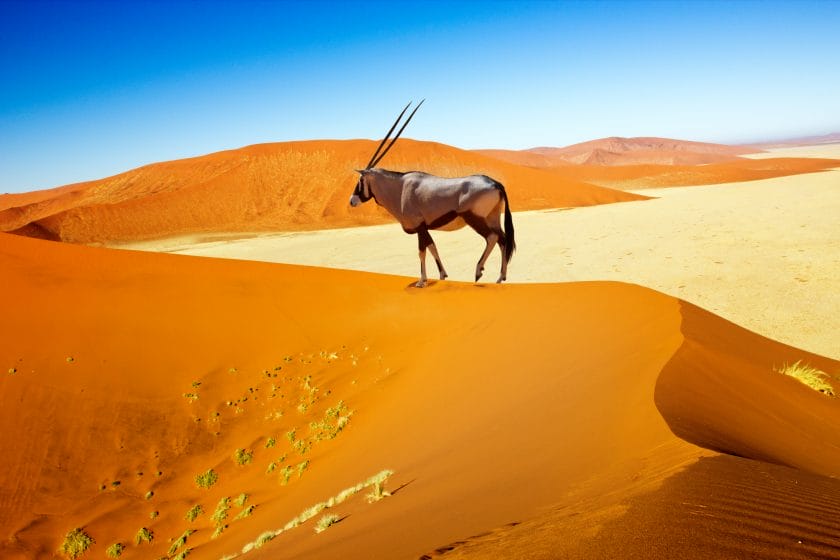
With its unique appearance and successful adaptation to the country’s harsh conditions, it’s no wonder it’s Namibia’s national animal. You’ll be able to spot oryxes all over Namibia, even from the road while you’re traveling the country, but a special treat is seeing them on the dunes of Sossusvlei at sunrise.
Kudu
Also known as the greater kudu, this is the second tallest antelope on the African continent. The kudu is easily recognizable thanks to its long spiral horns and manes of long hair.

Despite its large build, it’s an agile species that can easily jump fences and other obstacles. You’ll find this antelope throughout central and northern Namibia and they’re typically prevalent on commercial farmland and in game parks.
Springbok
South Africa’s national animal, the springbok is widespread throughout Namibia. Perhaps best known for their graceful jumps (they can leap up to two meters into the air) these striking creatures are built for harsh environments like dry riverbeds and short-grass savannas.
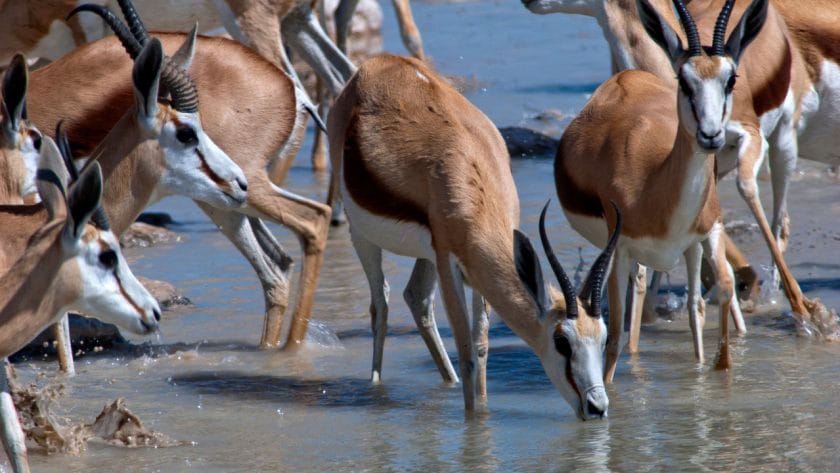
This makes them perfectly suited to the arid landscapes of Namibia. Large herds can be found in the Namib Desert and central Namibia, especially on farmlands around Windhoek, in Etosha National Park, and Namib-Naukluft National Park.
Elephant
The desert-dwelling elephants of Namibia are no different from the bush-dwelling elephants you’ll find in Africa but they do demonstrate different learned behaviors and physical traits that allow them to flourish in this harsh and arid environment.
Where most African elephants tend to leave a trail of destruction in their wake, desert-adapted elephants are far more gentle and don’t damage trees and bushes.
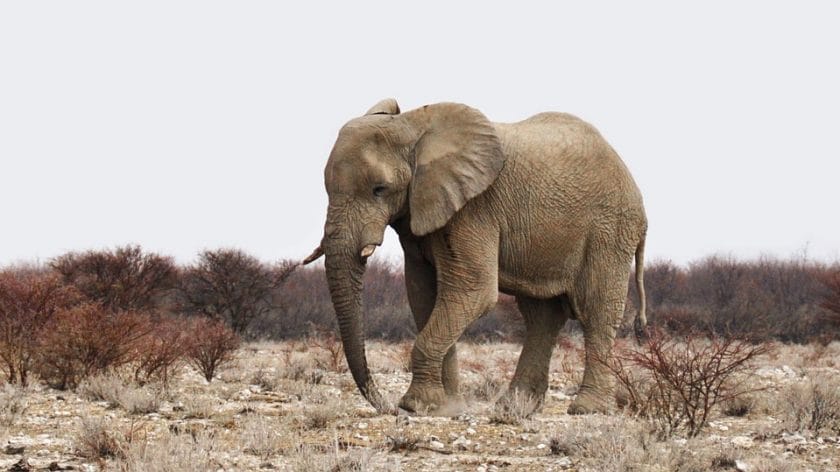
The elephants of Namibia have smaller bodies, longer legs, and larger feet which help them gain better traction in sandy terrain. They can also survive much longer without water. You’ll usually be able to find them in Namibia’s northern regions like Damaraland and the Skeleton Coast National Park.
Zebra
Namibia plays host to two of the four species of zebra to be found in Africa – Hartmann’s zebra and Burchell’s zebra. Look out for feint brown lines alongside the black stripes to identify Burchell’s zebra. Namibia’s zebras are uniquely adapted to survive and flourish in the hot and dry environment.
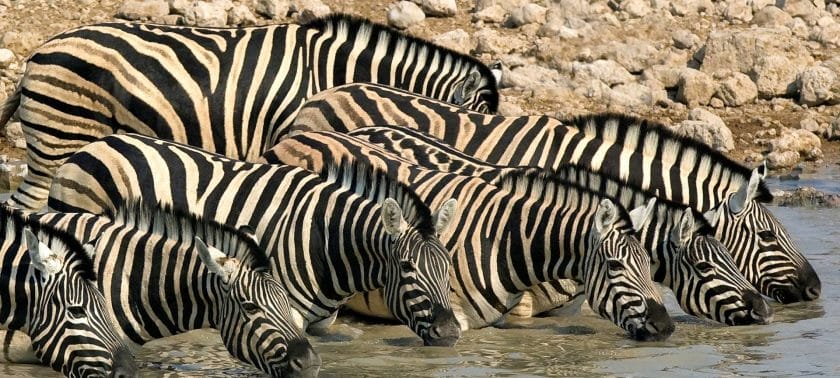
You’ll find Burchell’s zebra throughout the country, while Hartmann’s zebra sticks to the rocky terrain of western Etosha National Park.
Cape Buffalo
One of the Big Five, the Cape buffalo is one to tick off your list of famous wildlife. This ox-like and heavy set animal has thick legs and hooves that are larger in the front.
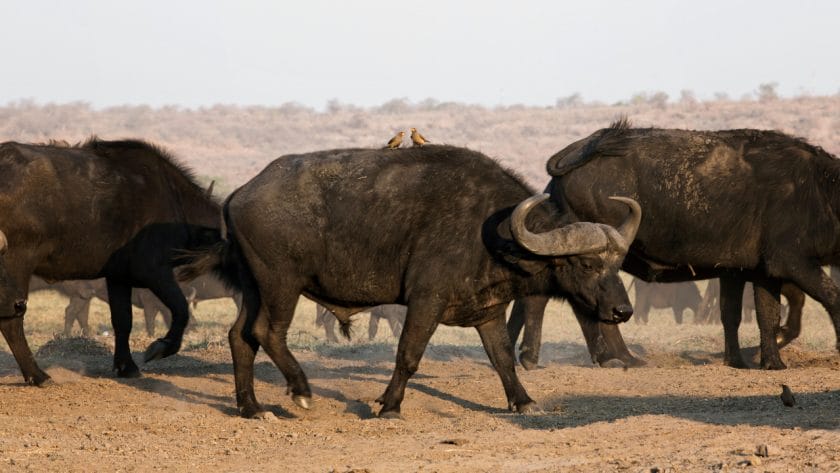
With its massive horns, this sociable creature is remarkable to behold, if a bit intimidating. Namibia’s population of Cape buffalo is much smaller than it once was, making these African bovines harder to spot. Most sightings are concentrated in the Caprivi Strip.
Wild Horse
Often referred to as the Namib Desert Horse, the renowned wild horses of Namibia have been traversing the arid plains for decades. Having successfully adapted to the harsh ecosystem, they’re one of the most sought-after animals to spot on a Namib Desert safari.
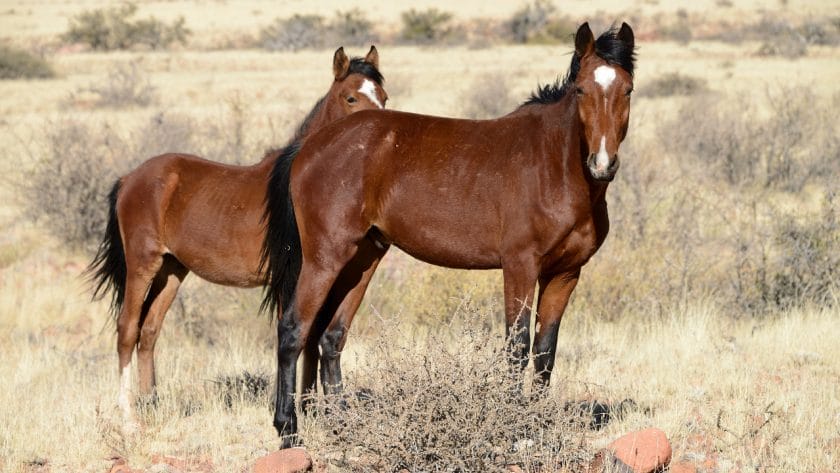
They’re the only horses of their kind in Africa and you’ll find them around the Garub waterhole in Namib-Naukluft National Park.
Lion
While most African lions are found among acacia trees and rolling savanna, Namibia’s lions can be seen traversing mountainous sand dunes and feasting on seals along beaches. Namibia is the only place in the world where lions have adapted to thrive in desert conditions.
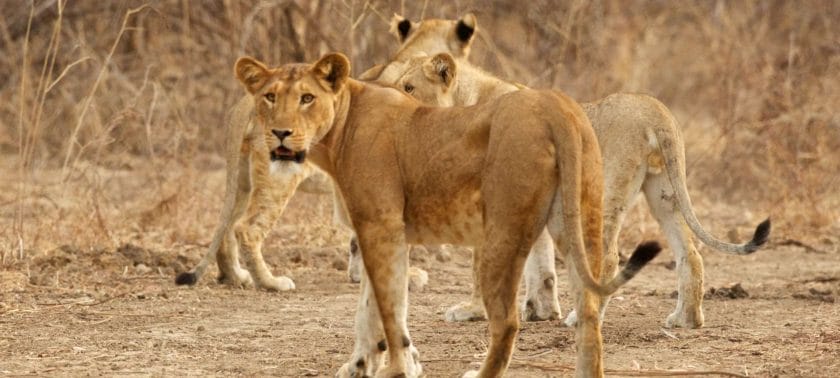
They tend to have smaller prides and larger home ranges than their bush-adapted counterparts. Namibia’s largest population of lions can be found in Etosha National Park, while smaller populations reside in the Caprivi, Bushmanland, Kaokoland, and Skeleton Coast Park.
Cape Fur Seal
Spend any amount of time on Namibia’s coast and you’re pretty much guaranteed to see the Cape fur seal. Known for their excellent swimming and hunting skills, they can close their nostrils and have eyes that can see both forward and to the sides.
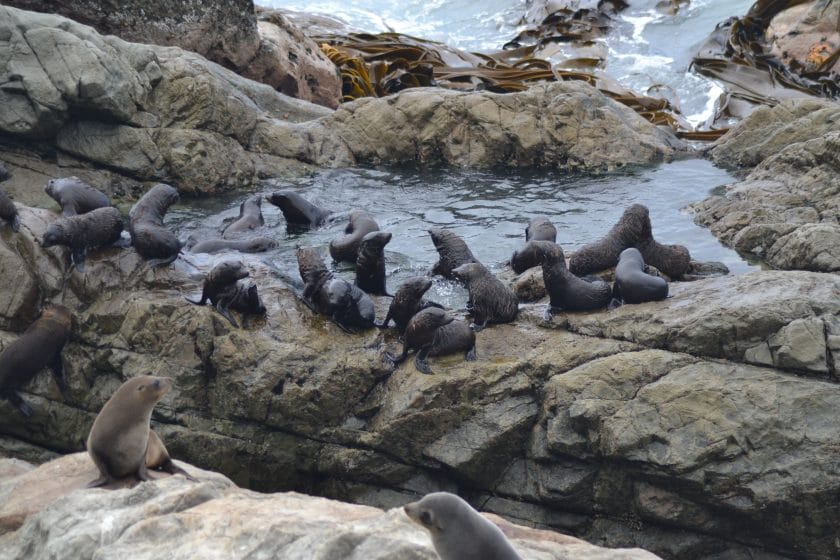
One thing that makes them different from true seals is their external ears. Endemic to the coastline of Southern Africa, Cape fur seals can be found along Namibia’s seaside in places like Swakopmund and Skeleton Coast National Park.
Spotted Hyena
Spotted hyenas are referred to as the ‘laughing hyena’ thanks to their fast, loud, and high-pitched whoop calls. The other two subspecies, the brown hyena and striped hyena, make a grunt or chattering sound respectively.
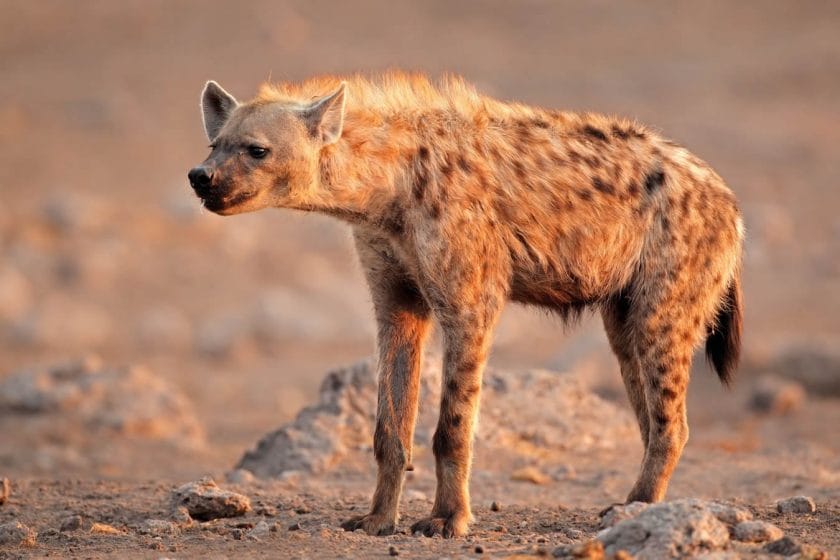
You’ll find spotted hyenas in Etosha National Park, Kaokoland, the Caprivi Strip, Kavango, and Bushmanland regions. Smaller populations reside in the Namib Desert and within the Skeleton Coast National Park.
Giraffe
Giraffes are the tallest of all animals and one of Africa’s most popular game sightings. This large, gentle creature survives in the desert by being able to shut its nostrils to keep out the desert’s dust and sand.
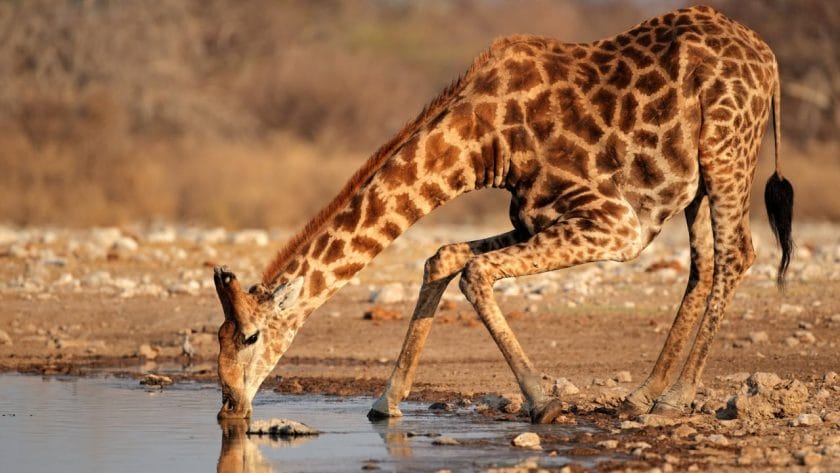
Giraffes here can go without drinking water for several weeks. You’ll find the giraffes of Namibia in the east, south, and west of Etosha National Park, as well as on private reserves in Damaraland and Kaokoland.
Aardvark
The aardvark is a strange-looking creature with a long tubular snout.
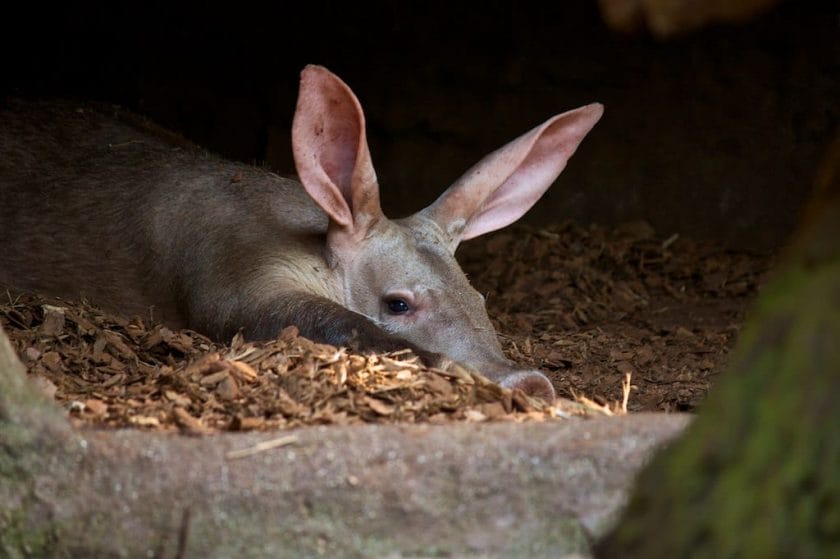
This rare and fascinating animal is a sought-after sighting on a safari in Namibia. It can be found on the Skeleton Coast, in the Sossusvlei dunes, Kaokoland, and Damaraland.
Aardwolf
Aardwolves resemble an unusual type of hyena. They tend to be small, weak, and cone-shaped. Because it can’t really protect itself from predators, the aardwolf lives in underground burrows and is mostly nocturnal.
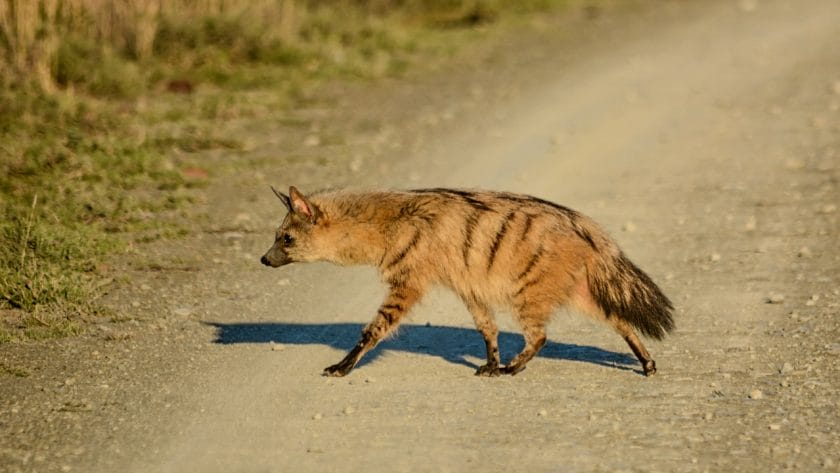
Aardwolves are common sightings in the majority of Namibia’s savanna landscape, except for the coastal Namib Desert.
Bat-Eared Fox
This animal’s most notable characteristic are its large ears that give it an almost bat-like appearance. Smaller than jackals, bat-eared foxes are from the same family.

They are monogamous mammals found in groups consisting of just a mated pair and their pups. Bat-eared foxes can be found in nearly every region of Namibia and are known to follow the rains in their search for abundant insect activity.
Ostrich
These wild birds are naturally found all over Africa but are especially well-adapted to survive in the dry and harsh conditions of Namibia since they can go for long periods without water.
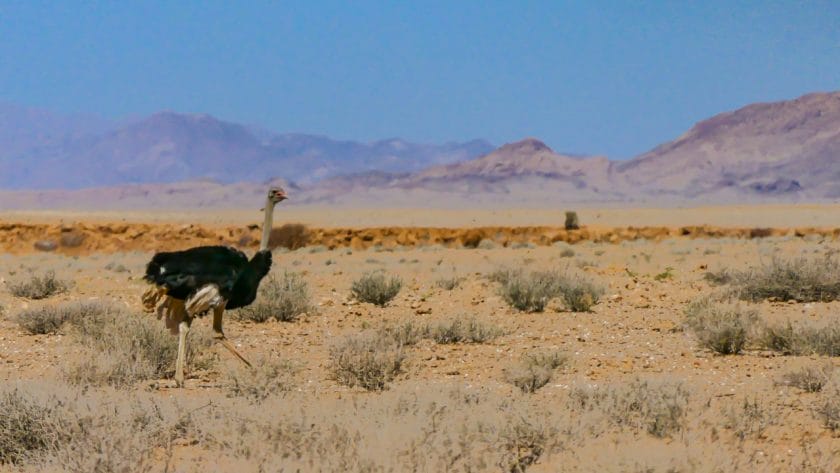
They’re giant flightless birds and with their long legs they can reach speeds of up to 45 mph. Ostriches can usually be found in the northern parts of the Namib Desert, Etosha National Park, the Kalahari Desert, and the Caprivi Strip.
Meerkat
Meerkats are loveable, cute, and highly social creatures. Their name translates to ‘ant cat’ and they feast on ants every chance they get, as well as foraging in dry riverbeds, sand, and crevices.
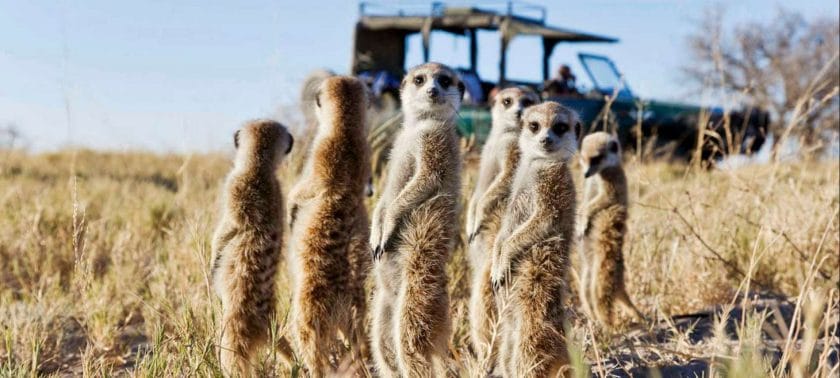
They’re hardy creatures that can eat scorpions and even survive snake bites. You’ll find them in eastern Namibia, Damaraland, and the Namib Desert.
Blue Wildebeest
Despite being most famous for their annual migration in the Serengeti and Masai Mara, Blue Wildebeest are actually common in many parts of Africa.
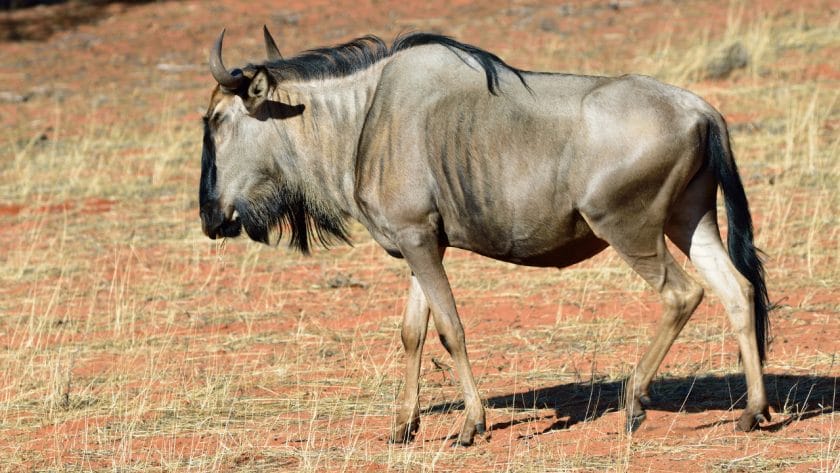
These large animals might seem quite intimidating, but they actually scare quite easily and prefer to stick to the herd. In Namibia, they’re most commonly found in Etosha National Park.
Leopard
The most elusive animal of the Big Five, leopards are a thrill to spot given their rarity. Leopards are mainly nocturnal creatures, although you might be able to spot them during the day lazing in the sun on rocky ridges or on tree branches.
Leopards can usually be found throughout Namibia, and several lodges offer conservation projects including Okonjima Bush Camp and Okonjima Plains.
Cheetah
Cheetahs are one of the most endangered species on the planet, making seeing one in its natural environment a special thrill. The fastest land mammal, cheetahs can reach speeds of up to 65 mph and make their homes in open grasslands, savanna woodlands, and on the fringes of the desert.
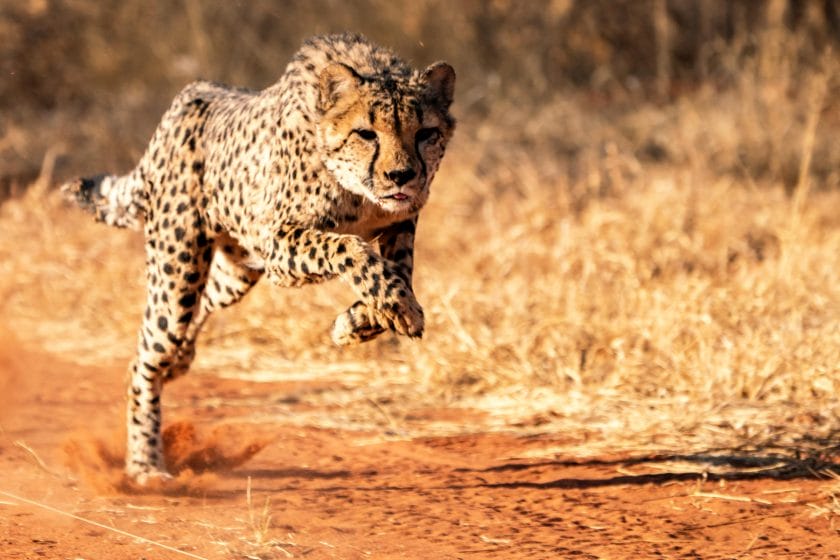
They’re particularly suited to Namibia’s harsh climate because they can survive on moisture from their prey. Namibia plays host to a large number of the world’s remaining populations and you’ll be able to spot them in Etosha National Park.
African Wild Dog
One of the most endangered mammal species in Africa, African wild dogs are recognizable by their large rounded ears, long legs, bushy white-tipped tails, and compelling patched coats.
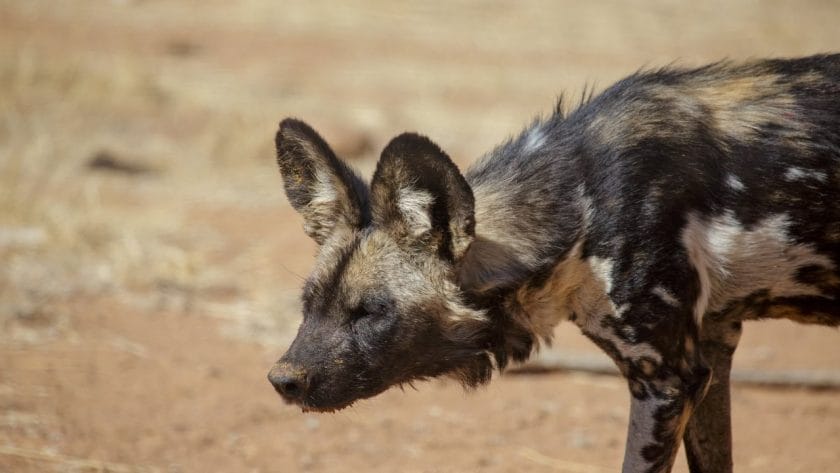
They’re highly social creatures that live and hunt in large packs of up to 20 members. Although sightings of wild dogs are rare, your best bet of seeing them is in Bushmanland, the Caprivi Strip, and Okonjima Nature Reserve.
Rhino
Once abundant throughout Africa, both black and white rhino are today on the brink of extinction. Thankfully there are numerous conservation initiatives and projects working hard to ensure these creatures are around for future generations to witness.
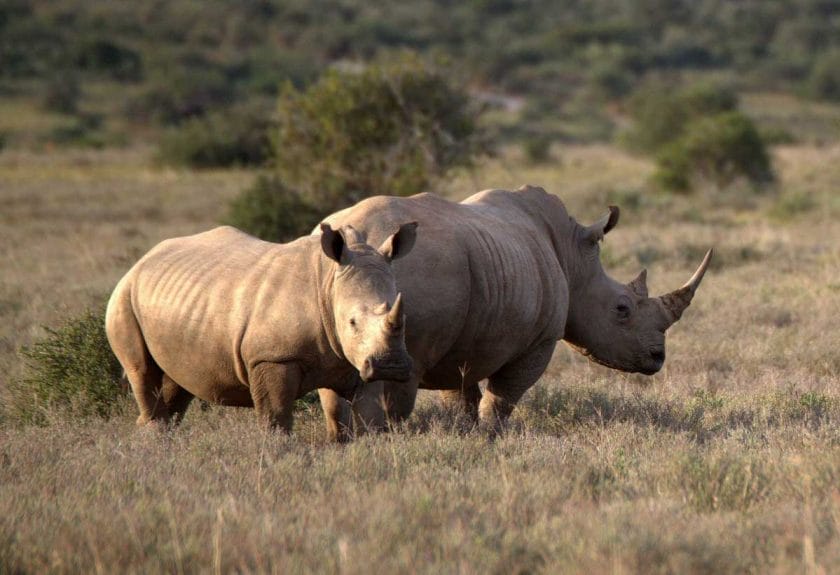
The two species are almost identical. The only difference is the shape of their lips – black rhinos are hook-lipped while white rhinos are square-lipped.
Black rhinos can be found in Kaokoland and Damaraland, while white rhinos can be found in Etosha National Park and the Waterberg Plateau Park. Spotting a rhino is a highlight of a safari in Namibia.
Puku
This medium-sized stocky antelope frequents marshy grassland and riverine areas. Thanks to habitat loss, pukus are now on Namibia’s endangered list.
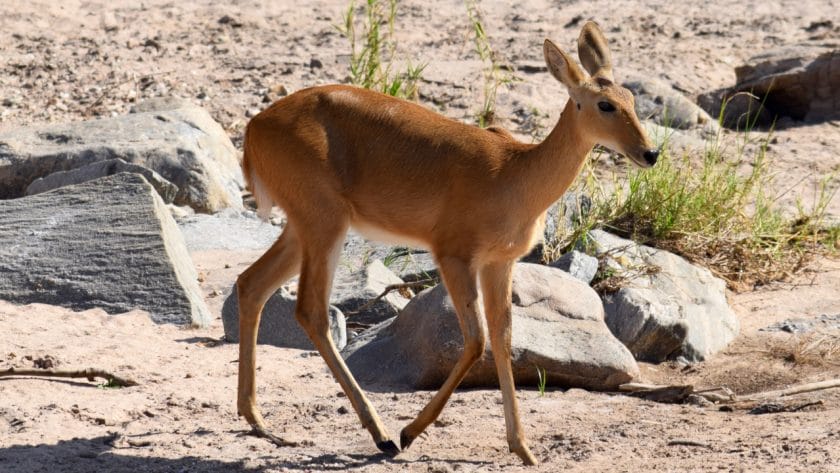
They’re known to emit a loud whistling sound to communicate with each other when something is approaching their territory. You’ll most likely spot pukus in the Caprivi Strip or on the Namibian side of the Chobe River.
Honey Badger
Usually most active between dusk and dawn, the honey badger is one of the most difficult animals to spot on a Namibian safari. About the same size as the European badger, these animals are extremely ferocious when under attack and have no problem fighting off animals that are much larger than they are.
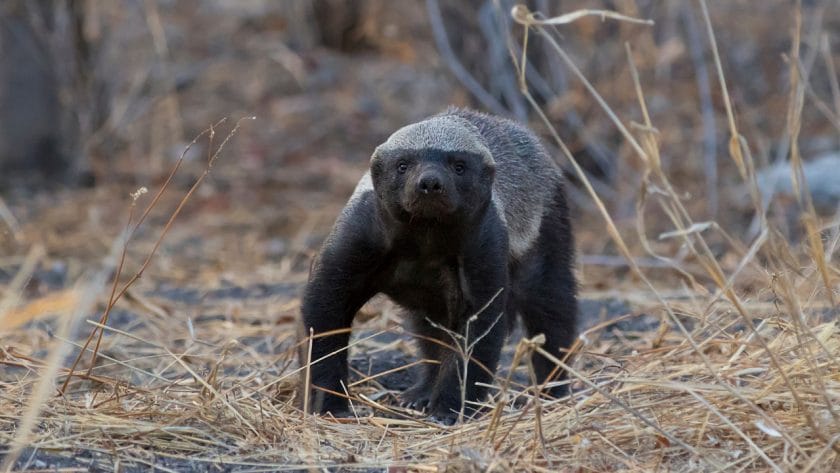
With long claws and thick, loose skin that protects them from stings and bites, they’re also known to emit a foul-smelling odor that discourages predators or enemies. Honey badgers can be found throughout Namibia, especially Etosha National Park. The only place you won’t find them is in the Namib Desert.








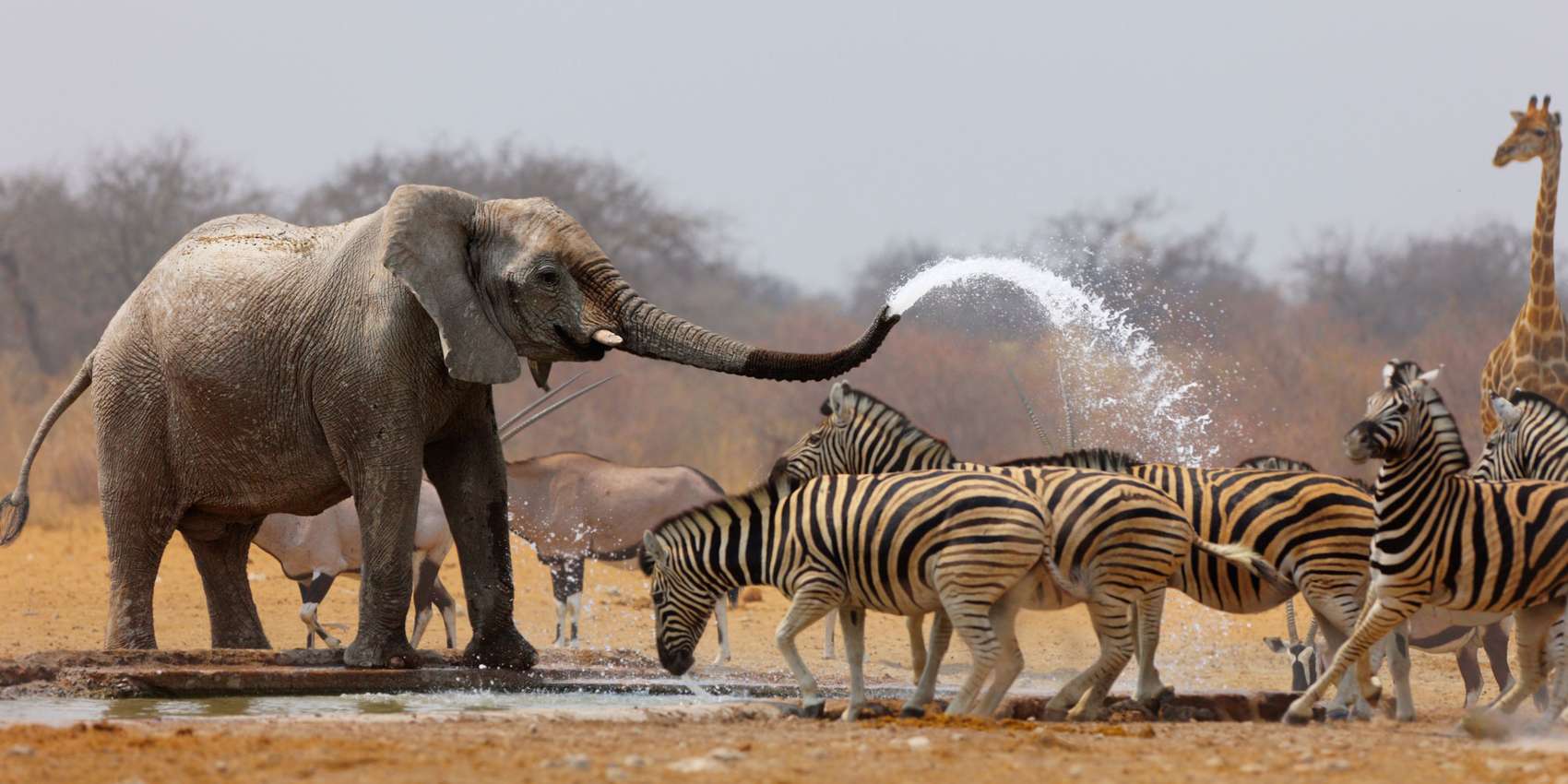
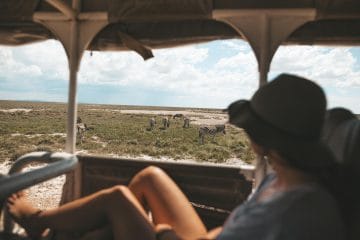

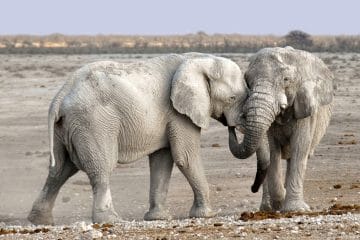
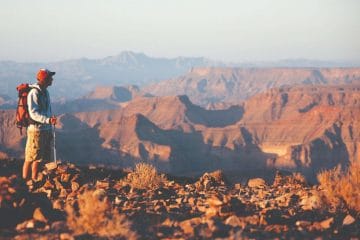
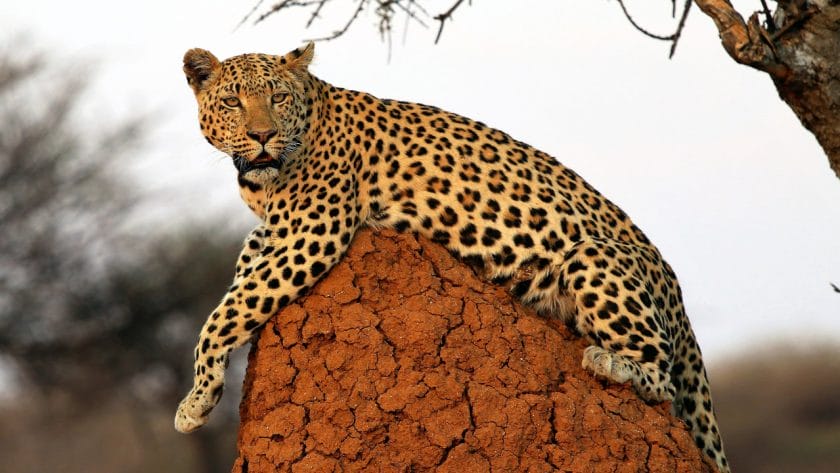
 Share on LinkedIn
Share on LinkedIn
 Share on Facebook
Share on Facebook
 Share on Twitter
Share on Twitter
 Blog List
Blog List
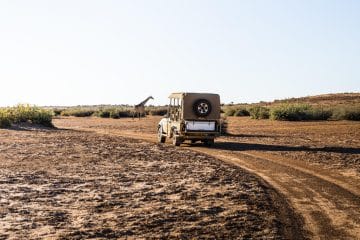
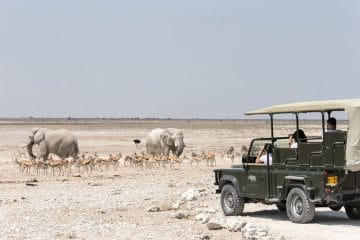









Author: Antoinette van Heerden - 27 July 2023
Last Update: 16 February 2024